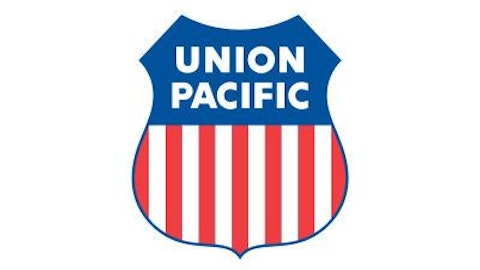The U.S. dollar may be in long-term decline, but don’t be surprised if the greenback enjoys a multiyear cycle of buoyancy during this decade. A number of factors are combining to support U.S. dollar strength versus other world currencies. These include:
The winding down of quantitative easing. The Federal Reserve believes that on balance, the U.S. economy has recovered enough for it to proceed with scaling back its monthly purchase of U.S. Treasuries and U.S. agency mortgage-backed securities. Rising interest rates will support a firmer dollar.
The U.S. economy is strengthening, and growth may actually accelerate beyond the current 1.8% quarterly GDP increase: Some economists expect U.S. growth as high as 4% in 2014.
Remember the BRIC countries? China is struggling to contain a credit bubble, and Brazil, India, and Russia are each facing unexpected quarterly growth slowdowns. As these countries fight to maintain their growth, their currencies will continue to be vulnerable against the dollar.
The eurozone is still recovering from its ill-fated foray into austerity. New worries in Portugal and Greece are just the latest sign of fiscal fright on the European continent.
What does an appreciating dollar mean for your stock portfolio? Although well-run companies with multinational operations may be poised to post handsome returns in the long run, this is not a bad time to consider investing in corporations that derive most of their sales from within the United States. The reason is twofold: Such companies will benefit directly from the improving domestic economy, and what they earn in dollars they will keep, versus U.S.-based multinationals, which will face some revenue erosion as worldwide currencies slacken against the dollar.

Let’s review four well-managed companies that derive all or nearly all of their revenue from inside the United States, and exhibit persuasive investment themes to boot:
The largest U.S. rail transportation company should be able to reap benefits from a rising U.S. economy. In 2012, the company’s overall volume was flat due to weakness in coal and agricultural shipments (as a result of drought conditions across the western United States), which offset strength in other segments such as automobile, chemical, and oil shipments.However, Union Pacific Corporation (NYSE:UNP) managed to increase revenue by 7%, to $20.9 billion, through stronger pricing and fuel surcharges. The higher revenue, coupled with productivity gains, led to record net income of $6.75 billion, outpacing the prior year’s net income by 18%.
The first quarter of 2013 was in some ways a snapshot of the entire year of 2012. Volume was down 2% versus the prior year quarter, again dragged down by weak coal and agricultural shipments.Yet the company managed to grow average revenue per car, or ARPC, by 6%,again by increasing pricing, which resulted in overall revenue growth of 3.5% and net income growth of nearly 11% versus the comparable prior-year quarter. Do you see a pattern here? Union Pacific Corporation (NYSE:UNP) enjoys very high customer satisfaction, and satisfied customers are often less price-sensitive customers. The ability to raise prices during a period of flat volume will again spur higher revenue if volume starts to pick up in the latter half of 2013 and beyond.
King of Prussia, Pa.-based Universal Health Services, Inc. (NYSE:UHS) operates acute-care hospitals and behavioral health centers in the United States and the U.S. Virgin Islands.The company books more than $7 billion in annual revenue, and has grown its quarterly earnings more than 220% over the last five years.
Universal Health Services, Inc. (NYSE:UHS) has declined in recent trading sessions along with other health service providers, following the Obama administration’s decision to delay implementation of a key provision of the Affordable Care Act until 2015: the requirement that employers with more than 50 employees provide health insurance to all employees or face a penalty of $2,000 per employee.
Nonetheless, Universal Health Services, Inc. (NYSE:UHS) is poised to benefit from the Affordable Care Act. The company provides charity care and discounts to uninsured and underinsured patients who undergo nonelective treatment at Universal Health Services, Inc. (NYSE:UHS)’ acute health care facilities. It’s a noble action, as these services and discounts cannot be recorded as net revenue. Last year, Universal Health Services, Inc. (NYSE:UHS) provided unreimbursed care in an amount equal to 15% of its $7 billion of revenue. So as more people become insured by law under the Affordable Care Act, the company’s reimbursed service revenue will rise, providing an effortless boost to earnings.
For a company that enjoys vigorous revenue growth, Whole Foods Market, Inc. (NASDAQ:WFM) employs a slow-motion approach to international expansion. Many domestic companies with similar long-term prospects have jumped into international markets over the last decade to establish a presence in developing markets. But Whole Foods Market, Inc. (NASDAQ:WFM) is so focused on optimizing its stores in the U.S. that it is content to have only a middling presence in other countries — for now. As of its most recent business quarter, the company reported that year to date, it derived fully 96.6% of its sales within the U.S. And those sales resulted in an impressive net profit margin of 4.7% — one of the highest margins in the grocery industry.One key to Whole Foods Market, Inc. (NASDAQ:WFM)‘ continued success will be its ability to make steady, incremental progress in its pricing strategies and operational efficiencies, which I’ve discussed previously here. Whole Foods Market, Inc. (NASDAQ:WFM)’ stock tends to be volatile around its earnings releases, and this often provides a good entry point for first-time investors.
Packaging Corp Of America (NYSE:PKG) is a manufacturer of containerboard, the paperboard used to make corrugated boxes. The company also produces corrugated and heavy-duty packaging, retail packaging and displays, and office storage boxes. PCA has exposure to increased shipping and packaging due to an active U.S. economy, and it has executed well over the last year: It grew revenue 12.5% over the prior year as of its most recently reported quarter, and it posts a very decent quarterly profit margin of more than 8%. At $2.9 billion in sales, PCA is relatively small, but it sports a healthy balance sheet and pays a dividend that currently yields 3.2%. Combine each of these characteristics with potential for continued growth, and you can see why the company’s stock is up more than 80% in the last year on a total-return basis.
Final thought: The built-in hedge
Investing in multinationals is an important strategy for a long-term portfolio, but that doesn’t mean that great opportunities don’t exist stateside. Holding blue chip stocks these days often means that you’ve got international exposure by default. By diversifying into the fine companies mentioned above, and ones similar to these, you can in effect create your very own currency hedge.
The article 4 Stocks for a Rising U.S. Dollar originally appeared on Fool.com and is written by Asit Sharma.
Fool contributor Asit Sharma has no position in any stocks mentioned. The Motley Fool recommends Whole Foods Market. The Motley Fool owns shares of Whole Foods Market.
Copyright © 1995 – 2013 The Motley Fool, LLC. All rights reserved. The Motley Fool has a disclosure policy.





